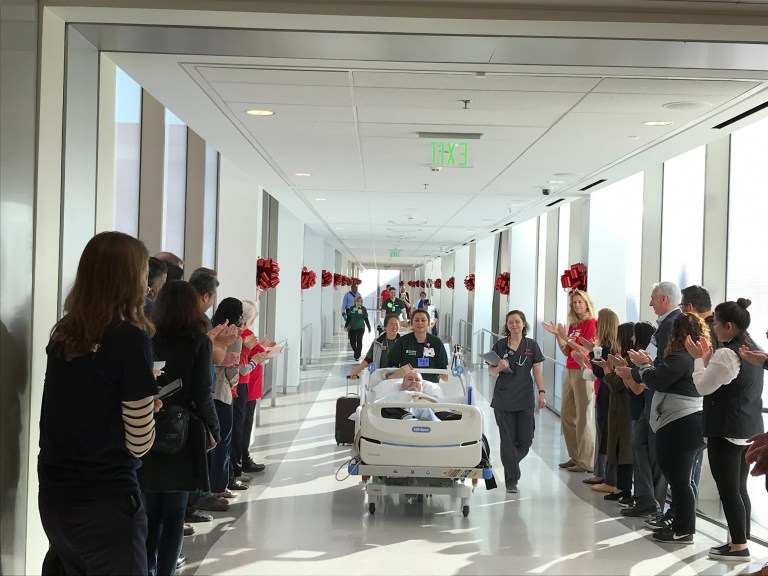After a decade of construction and development, Stanford’s new hospital held its official opening on Sunday, marking the transition from the old facility to the new after nearly 60 years of patient service.
The building’s first patient crossed the bridge between the two facilities on Sunday morning, relocating to one of the 368 entirely private patient rooms in the new $2 billion hospital.
The old hospital will remain in operation and is currently being renovated to convert all patient rooms into private rooms. Portions of the original building constructed in 1959 will ultimately be removed because they can not be brought up to state-mandated earthquake code.
In preparation for the opening, hospital staff conducted three dress rehearsals to assess the flow and spatial arrangement of the hospital, complete with debriefs where doctors and nurses could provide their feedback.
Before the opening ceremony, new signage for the emergency department (ED) on the first floor was unveiled. Above the ED are operating rooms on the second floor and a wellness center — including an interfaith chapel, family resource center and a garden — on the third floor. The remaining four floors are reserved for patient rooms, each including a personal bathroom.
The original ED in the old hospital will now serve as Stanford’s first dedicated pediatric ED for patients 20 and younger.
According to David Entwistle, president and CEO of Stanford Health Care, the redesign of the hospital was sparked by a single question: “What if you could build a hospital where no one could see the technology, but just see a welcoming interface?”
Each room includes wall-to-wall windows, a TV and tablet system that allows patients to order room service and consult with physicians and a family area with a fold-out bed, extra storage space and a table.
“It’s so overwhelming to come to the hospital,” Entwistle said. “Usually, people are not anticipating that they have to come in. They have to be taken out of other activities in their lives, whether it’s work, family or school. So creating a comfortable environment is really important to us.”
Though the project began largely in an effort to bring the Stanford medical campus up to state earthquake code, Entwistle also said the patient experience has been overhauled.
Entwistle said that Stanford hopes to lead the country in shifting towards preventative and precision-based medicine, with the eventual goal of moving toward a system in which patients can take more control of their healthcare and spend less time in a hospital bed.
“We want to know what we can do to identify, prevent and cure potential health problems precisely so that we can keep you out of the hospital in the long term,” Entwistle said. “That’s the next phase in healthcare that I get really excited about.”
This article has been corrected to reflect that the original hospital will continue to be used for patient treatment and that only parts of the building cannot be brought into compliance with California earthquake code. The Daily regrets this error.
Contact Andrew Tan at tandrew ‘at’ stanford.edu and Sophia Nesamoney at nsophia ‘at’ stanford.edu.
